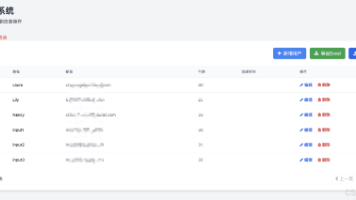在 .NET 中,CLR 的执行引擎是如何加载和执行程序集的?
CLR 执行引擎加载程序集的过程主要包括:初始化 CLR 运行时、加载主程序集、解析依赖项、JIT 编译和代码执行。首先 CLR 初始化核心服务并设置 AppDomain,然后通过搜索路径定位程序集(GAC、应用目录等),加载后验证元数据并构建类型信息。JIT 编译器在首次调用方法时编译 IL 为本地代码,进行类型加载、方法表构建等准备工作,最终执行托管代码。整个过程涉及程序集解析、元数据分析、安
·
.NET 中 CLR 执行引擎加载和执行程序集的过程
CLR(Common Language Runtime)是 .NET Framework 的核心组件,负责管理程序的执行。
程序集加载的整体流程
详细的加载过程
1. CLR 初始化阶段
当执行一个 .NET 应用程序时,操作系统首先加载并执行启动器(如 coreclr.dll 或 mscorwks.dll),然后 CLR 进行初始化:
// 简化的 CLR 初始化示意代码
public class CLRRuntimeInitialization
{
public static void InitializeRuntime()
{
// 1. 加载 MSCorEE (Execution Engine)
// 2. 初始化核心服务
// 3. 设置 AppDomain
// 4. 配置垃圾回收器
// 5. 初始化 JIT 编译器
Console.WriteLine("CLR 初始化完成");
}
}
2. 程序集加载机制
程序集解析过程
// 程序集加载的核心流程
public class AssemblyLoadingProcess
{
public void LoadAssemblyExample()
{
// 1. 程序集引用解析
// 2. 程序集定位
// 3. 程序集加载到内存
// 4. 元数据读取
// 5. 类型元数据验证
Assembly assembly = Assembly.LoadFrom("MyApplication.exe");
Type mainType = assembly.GetType("MyApplication.Program");
Console.WriteLine($"已加载程序集: {assembly.FullName}");
}
}
3. 程序集搜索顺序
public class AssemblyResolutionOrder
{
// 程序集搜索优先级:
/*
1. GAC (Global Assembly Cache) - 全局程序集缓存
2. 应用程序基目录
3. 私有二进制路径
4. CodeBase 指定的位置
5. probing 元素指定的子目录
*/
public static void DemonstrateSearchPaths()
{
AppDomain currentDomain = AppDomain.CurrentDomain;
// 显示当前域的信息
Console.WriteLine($"应用程序基目录: {currentDomain.BaseDirectory}");
Console.WriteLine($"私有路径: {string.Join(", ", currentDomain.RelativeSearchPath ?? new string[0])}");
Console.WriteLine($"动态目录: {currentDomain.DynamicDirectory}");
}
}
程序集加载的具体步骤
第一步:程序集发现与定位
// 程序集解析示例
public class AssemblyResolver
{
static AssemblyResolver()
{
// 注册自定义程序集解析事件处理器
AppDomain.CurrentDomain.AssemblyResolve += CurrentDomain_AssemblyResolve;
}
private static Assembly CurrentDomain_AssemblyResolve(object sender, ResolveEventArgs args)
{
Console.WriteLine($"正在解析程序集: {args.Name}");
// 自定义解析逻辑
string assemblyPath = Path.Combine(AppDomain.CurrentDomain.BaseDirectory,
new AssemblyName(args.Name).Name + ".dll");
if (File.Exists(assemblyPath))
{
return Assembly.LoadFrom(assemblyPath);
}
return null;
}
public static void ManualLoadExample()
{
try
{
// 方式1: 从文件加载
Assembly assembly1 = Assembly.LoadFrom("ExternalLibrary.dll");
// 方式2: 从字节数组加载
byte[] rawAssembly = File.ReadAllBytes("MyLib.dll");
Assembly assembly2 = Assembly.Load(rawAssembly);
// 方式3: 按名称加载(使用标准解析规则)
Assembly assembly3 = Assembly.Load("System.Data, Version=4.0.0.0, Culture=neutral, PublicKeyToken=b77a5c561934e089");
}
catch (FileNotFoundException ex)
{
Console.WriteLine($"找不到程序集: {ex.Message}");
}
catch (FileLoadException ex)
{
Console.WriteLine($"无法加载程序集: {ex.Message}");
}
}
}
第二步:元数据分析
// 元数据读取和分析
public class MetadataAnalyzer
{
public void AnalyzeAssemblyMetadata(string assemblyPath)
{
Assembly assembly = Assembly.LoadFrom(assemblyPath);
// 获取程序集基本信息
Console.WriteLine($"程序集名称: {assembly.GetName().Name}");
Console.WriteLine($"版本: {assembly.GetName().Version}");
Console.WriteLine($"文化: {assembly.GetName().CultureName}");
// 获取类型信息
Type[] types = assembly.GetTypes();
Console.WriteLine($"包含 {types.Length} 个类型");
foreach (Type type in types)
{
Console.WriteLine($"\n类型: {type.FullName}");
// 获取方法信息
MethodInfo[] methods = type.GetMethods(BindingFlags.Public | BindingFlags.Instance | BindingFlags.Static);
foreach (MethodInfo method in methods)
{
Console.WriteLine($" 方法: {method.Name}");
}
}
}
}
第三步:JIT 编译准备
// JIT 编译前的准备工作
public class JITCompilationPreparation
{
public void PrepareForJITCompilation()
{
// 1. 类型加载
Type targetType = typeof(MyClass);
// 2. 方法表构建
RuntimeMethodHandle methodHandle = typeof(MyClass).GetMethod("ProcessData").MethodHandle;
// 3. IL 代码验证
// 4. 安全性检查
// 5. 内存分配准备
Console.WriteLine("JIT 编译准备完成");
}
}
public class MyClass
{
public void ProcessData()
{
Console.WriteLine("处理数据...");
}
}
JIT 编译执行过程
实时编译机制
// JIT 编译过程演示
public class JITCompilationDemo
{
public void DemonstrateJITProcess()
{
// 第一次调用方法时触发 JIT 编译
MyMath math = new MyMath();
int result = math.Add(5, 3); // 此时进行 JIT 编译
Console.WriteLine($"结果: {result}");
// 后续调用直接执行机器码
result = math.Add(10, 20);
Console.WriteLine($"结果: {result}");
}
}
public class MyMath
{
public int Add(int a, int b)
{
return a + b;
}
public long Multiply(long a, long b)
{
return a * b;
}
}
编译优化级别
// 不同优化级别的示例
public class OptimizationLevels
{
// Debug 模式下的方法(无优化)
[MethodImpl(MethodImplOptions.NoOptimization)]
public int UnoptimizedMethod(int x)
{
int temp = x * 2;
return temp + 1;
}
// Release 模式下的优化方法
public int OptimizedMethod(int x)
{
// JIT 可能将其优化为直接返回 x * 2 + 1
return x * 2 + 1;
}
// 强制内联的方法
[MethodImpl(MethodImplOptions.AggressiveInlining)]
public int InlinedMethod(int x)
{
return x + 42;
}
}
执行引擎的核心组件
1. 类加载器系统
// 类加载器工作机制
public class ClassLoaderMechanism
{
public void DemonstrateClassLoader()
{
// 类型首次使用时加载
Type stringType = typeof(string); // 基础类型已在 mscorlib 中预加载
// 自定义类型的延迟加载
Lazy<MyCustomClass> lazyInstance = new Lazy<MyCustomClass>(() => new MyCustomClass());
// 实际创建实例时才加载类
MyCustomClass instance = lazyInstance.Value;
}
}
public class MyCustomClass
{
static MyCustomClass()
{
Console.WriteLine("MyCustomClass 静态构造函数被执行");
}
public MyCustomClass()
{
Console.WriteLine("MyCustomClass 实例构造函数被执行");
}
}
2. 方法调度器
// 方法调度示例
public class MethodDispatcher
{
public void DemonstrateMethodDispatch()
{
BaseClass obj = new DerivedClass();
// 虚方法调用 - 使用虚方法表(V-Table)
obj.VirtualMethod(); // 调用 DerivedClass 版本
// 非虚方法调用 - 直接调用
obj.NonVirtualMethod(); // 调用 BaseClass 版本
}
}
public abstract class BaseClass
{
public void NonVirtualMethod()
{
Console.WriteLine("BaseClass::NonVirtualMethod");
}
public virtual void VirtualMethod()
{
Console.WriteLine("BaseClass::VirtualMethod");
}
}
public class DerivedClass : BaseClass
{
public override void VirtualMethod()
{
Console.WriteLine("DerivedClass::VirtualMethod");
}
}
3. 异常处理机制
// 异常处理框架
public class ExceptionHandlingFramework
{
public void DemonstrateExceptionHandling()
{
try
{
ThrowException();
}
catch (InvalidOperationException ex)
{
Console.WriteLine($"捕获异常: {ex.Message}");
Console.WriteLine($"堆栈跟踪: {ex.StackTrace}");
}
finally
{
Console.WriteLine("Finally 块执行");
}
}
[MethodImpl(MethodImplOptions.NoInlining)] // 防止内联以保持堆栈跟踪清晰
private void ThrowException()
{
throw new InvalidOperationException("测试异常");
}
}
性能优化考虑
程序集加载优化
// 程序集加载性能优化
public class AssemblyLoadingOptimization
{
// 使用 AssemblyLoadContext 进行更好的控制 (.NET Core/5+)
public void ModernAssemblyLoading()
{
#if NETCOREAPP
AssemblyLoadContext context = new AssemblyLoadContext("MyContext", isCollectible: true);
// 加载程序集
Assembly assembly = context.LoadFromAssemblyPath(@"C:\MyApp\Plugins\Plugin.dll");
// 使用完成后可以卸载上下文
context.Unload();
#endif
}
// 预加载常用程序集
public void PreloadAssemblies()
{
// 在应用程序启动时预加载关键程序集
Task.Run(() =>
{
try
{
Assembly.Load("Newtonsoft.Json");
Assembly.Load("System.Data.SqlClient");
}
catch (Exception ex)
{
Console.WriteLine($"预加载失败: {ex.Message}");
}
});
}
}
启动性能优化
// 启动性能优化策略
public class StartupOptimization
{
public void OptimizeStartup()
{
// 1. 延迟加载非必需组件
Lazy<IDataService> dataService = new Lazy<IDataService>(() => new DataService());
// 2. 异步初始化后台服务
Task.Run(InitializeBackgroundServices);
// 3. 预热 JIT 编译
PrecompileCriticalMethods();
}
private void InitializeBackgroundServices()
{
// 初始化日志服务、缓存等后台组件
Console.WriteLine("后台服务初始化完成");
}
private void PrecompileCriticalMethods()
{
// 提前调用关键路径上的方法以触发 JIT 编译
var optimizer = new CriticalPathOptimizer();
optimizer.Optimize(); // 触发 JIT 编译
}
}
public class CriticalPathOptimizer
{
public void Optimize()
{
// 关键业务逻辑方法
}
}
监控和调试
加载过程监控
// 程序集加载监控
public class AssemblyLoadMonitor
{
public void StartMonitoring()
{
// 监听程序集加载事件
AppDomain.CurrentDomain.AssemblyLoad += CurrentDomain_AssemblyLoad;
AppDomain.CurrentDomain.AssemblyResolve += CurrentDomain_AssemblyResolve;
Console.WriteLine("开始监控程序集加载");
}
private void CurrentDomain_AssemblyLoad(object sender, AssemblyLoadEventArgs args)
{
Console.WriteLine($"程序集已加载: {args.LoadedAssembly.FullName}");
Console.WriteLine($"位置: {args.LoadedAssembly.Location}");
}
private Assembly CurrentDomain_AssemblyResolve(object sender, ResolveEventArgs args)
{
Console.WriteLine($"程序集解析请求: {args.Name}");
return null; // 让默认解析器继续工作
}
}
通过这个深入的分析,我们可以看到 CLR 执行引擎如何智能地管理程序集的整个生命周期——从发现、加载、解析到最终的执行。这种设计既保证了安全性又提供了高性能,使得 .NET 应用程序能够在各种环境中稳定运行。
更多推荐
 已为社区贡献16条内容
已为社区贡献16条内容









所有评论(0)